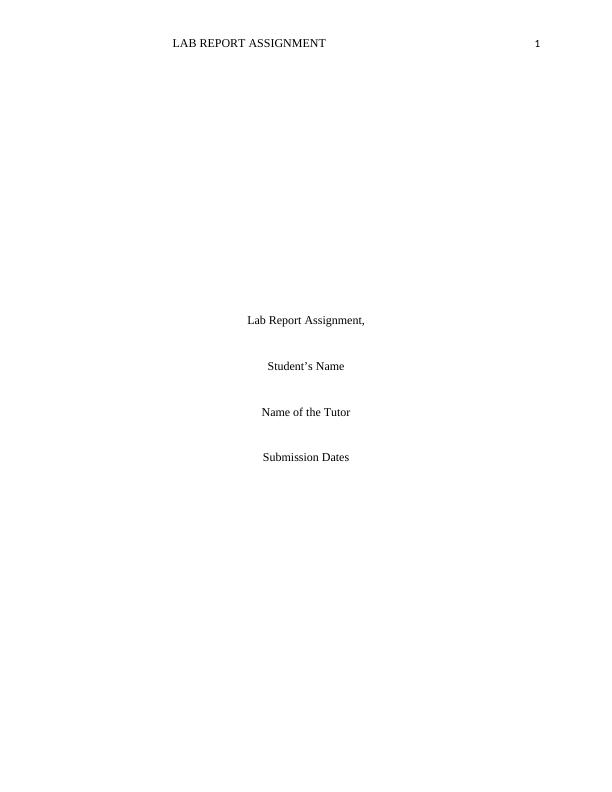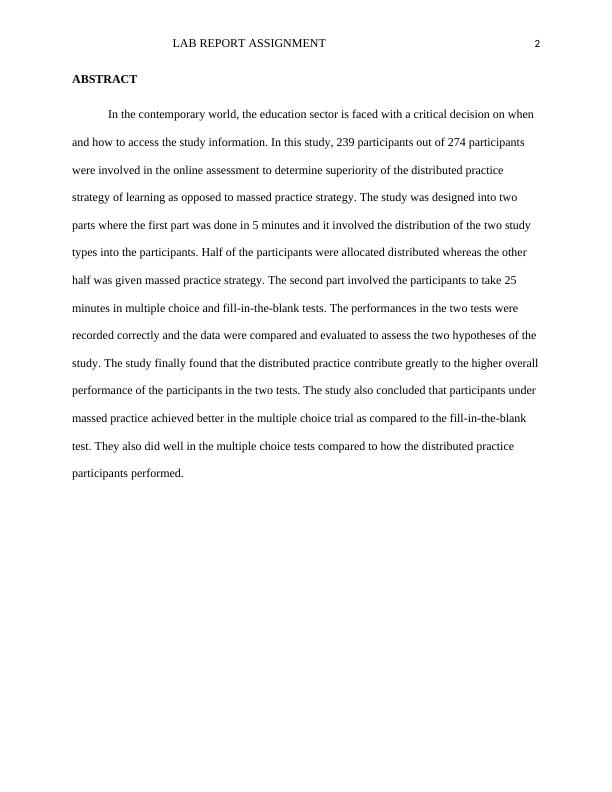Effect of Distributed Practice vs Massed Practice on Learning: Lab Report Assignment
Write a 2000-word lab report in APA-style journal article format for the PSY10004 Psychology 101 course at Swinburne University. The report should include sections on Introduction, Method, Results, and Discussion, as well as an Abstract and References. The assignment is worth 35% of the final mark and is due at the end of Week 8.
Added on 2023-06-04
About This Document
Effect of Distributed Practice vs Massed Practice on Learning: Lab Report Assignment
Write a 2000-word lab report in APA-style journal article format for the PSY10004 Psychology 101 course at Swinburne University. The report should include sections on Introduction, Method, Results, and Discussion, as well as an Abstract and References. The assignment is worth 35% of the final mark and is due at the end of Week 8.
Added on 2023-06-04
End of preview
Want to access all the pages? Upload your documents or become a member.




